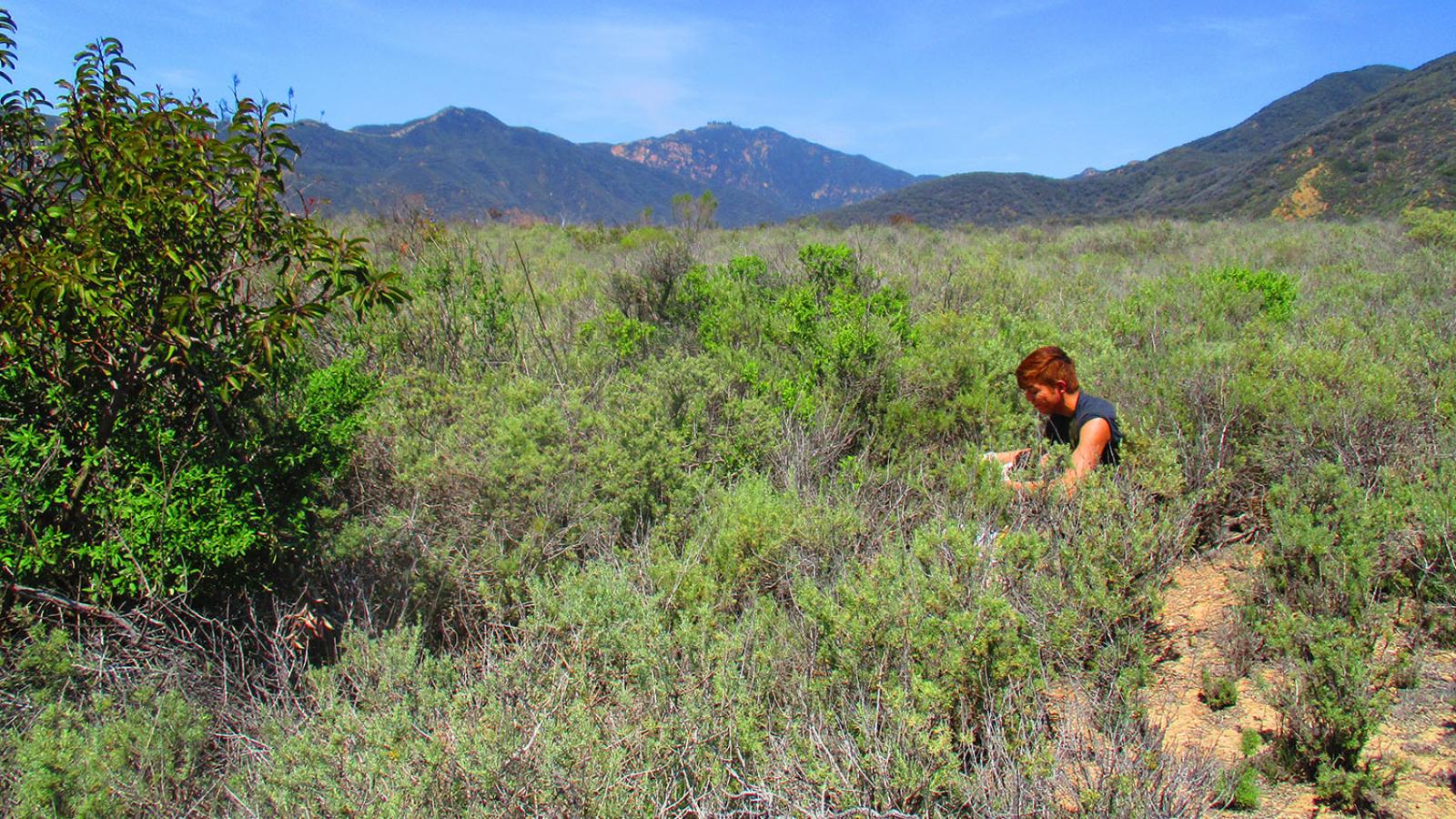Wildfires tear across Southern California and leave charred, barren landscapes in their path. But new research by Pomona College Biology Professors André Cavalcanti, Edward Crane and Wallace “Marty” Meyer finds that below the surface, the soil still teems with an abundance of bacteria vital to plant regrowth.
“We expected that fire would have really large impacts on soil bacterial communities,” says Meyer, who is also director of The Claremont Colleges’ Bernard Field Station. “What we found is that it didn’t.” The research was published on April 8 in PLOS One. First author was Pitzer College alumna Elena Cox ’20.
It’s hard to imagine that one scoop of soil contains thousands of different types of bacteria, but that’s what DNA sequencing of soil reveals, says Cavalcanti, who specializes in bioinformatics and analyzed the study data. He explains that approximately 30,000 different sequences were run for each of the 85 samples collected to determine their bacterial make-up.
“Do we know what all those soil bacteria really do? Not really,” says Meyer. What biologists do know, though, is that soil bacteria play a key role in ecosystem function. “They control how much carbon is stored in the soil versus released into the atmosphere. They control how much of various nutrients are available to plants. They control which plants can actually grow and germinate in the soil,” Meyer says. “So bacteria are what we call ecosystem engineers.”
The findings described in the paper were based on soil samples taken in the Santa Monica Mountain National Recreation Area, before and after the 2018 Woolsey Fire. At each site, samples were taken from areas that were home to native California sage scrub and an adjacent non-native habitat. “The bacterial assemblages under grasses are different than those under native species,” Cavalcanti says. Those differences remained after the fire, which “was kind of surprising to me. We were expecting to see a difference. It was a big fire, and bacteria will die if you burn them. It was such a cataclysmic thing and [yet] had so little effect.”
Cavalcanti suggests there could be several reasons for the small effect of fire on bacterial communities. “One is that bacteria are not really on the surface; they’re a little below ground,” he says. “Another is that our area is always burning. The bacteria that grow there [might be] pre-adapted to that.”
While the study found that fire did not have an immediate impact on the composition of soil bacteria communities, the researchers note that plant habitats often change after a fire. Over time, changes in plant communities can produce long-term “legacy” effects on soil bacteria assemblages, such as those that persisted in native and non-native areas after the fire. These differences can influence the types of plants an area will support, a process called plant-soil feedbacks. “Plant restoration efforts following a fire should strive to revegetate sage scrub areas to prevent these changes in microbial composition,” the authors write.
Often the first plants to grow back after a fire are non-native grasses, Meyer says, because the sheer volume of seeds they produce overwhelms the habitat. Native species can also repopulate in a burn area, but the increasing frequency of fires is making it harder for them to regrow from the roots or from reseeding. “Native Southern California plant communities have evolved with fire happening on a 70-year fire return interval,” he says. “The problem is that we’ve reduced the fire return interval to five years, because humans do silly things. Lightning is the only natural ignition source. If there is a fire and there was no lightning, that means that humans were responsible for starting the fire.”
Transition from native sage scrub to grasslands has a negative impact on climate change, Meyer notes. “Native sage scrub stores more carbon than non-native grasslands. So we lose carbon to the atmosphere if areas convert to non-native grasslands. Also, native sage plants use water more efficiently than non-native grasses do, so we lose our water resources. Sage scrub also harbors more biodiversity.” Consequently, loss of native habitat “is a really big sustainability issue.”
Determining the impact of fire on soil bacteria is a foundational step in managing landscapes, Meyer concludes. “Bacteria control much more than we give them credit for. We don’t see them, but they control what plants can grow in an area. They control how ecosystems function. If we are going to effectively manage natural ecosystems, understanding the role of what’s in the soil is critically important.”
